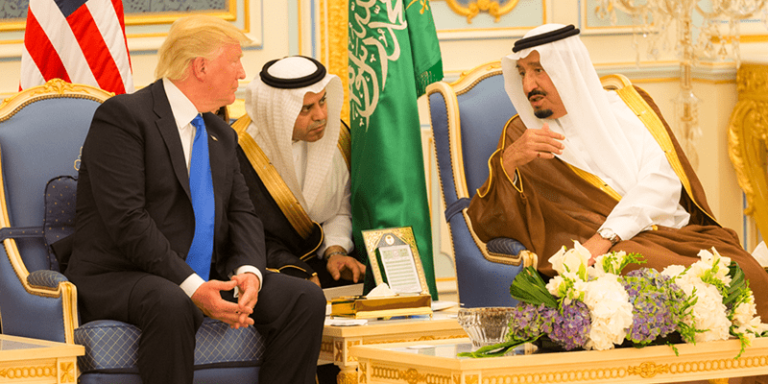
Although the domestic repercussions for President Donald Trump’s decision to withdraw from Syria are important, even more significant is whether it would be possible for any Gulf or Middle Eastern state to outline or adopt effective foreign policies that are consistent with the American vision and policy in the region. Recent years have proven without a doubt that what Washington is unable to do in the Middle East far exceeds what it can and wants to accomplish there.
How could it be possible for the states in the region to shape their foreign policies regarding a number of issues (such as the war in Syria, the Gulf crisis, and the Arab-Iranian conflict) while the ringleader—the United States—is internally disoriented, fragmented, and suffering from tension among its domestic institutions? Thus, the strongest leader in the region appears to be off balance, confused, and incapable of taking any effective decisions.
Washington: Attention Deficit and Contradictory Policies
Anthony Cordesman of the Center for Strategic and International Studies (CSIS) provides his insight into the contradictory American statements and stances, following President Trump’s declaration of withdrawal from Syria, as being “no more silly or meaningless than the past focus of far too many debates over US policy towards Syria. It also is no more lacking in relevance than virtually all of the previous U.S. debates over strategy in the Middle East and the Gulf since 2001. It is a debate over levels of effort in one country that have no clear strategic purpose, and that fails to come to grips with any of the many issues that should shape U.S. strategy in the region.”
Between September 2001 and the subsequent `war on terror,’ the war in Afghanistan, the 2003 US invasion of Iraq, and George W. Bush’s Greater Middle East Initiative, which was announced on February 6, 2004, the region witnessed a fluctuating American foreign policy on multiple levels. That series of contradictions was complemented by President Barack Obama’s tendency to withdraw when it came to crises in the Middle East, a policy that left behind an open conflict among the regional powers, especially over Syria and Iraq.
Today, after 15 years of contradictory US foreign policy in the region, no one in the American administration has officially declared the failure of the `war on terror’ or of the Greater Middle East Initiative. Perhaps the constant political changes in both Washington and the Middle East, especially after 2011, have removed from the American memory—and that of other stakeholders—the titles of these initiatives, their content, and their implications.
The Wrong Course: From the Gulf to Washington
The accelerated and dramatic developments in Washington’s foreign policy since Trump took office in January 2017 are not too different from what has been happening in the Middle East. The appointment of Mohammed bin Salman Al Saud as crown prince in June 2017 imposed a new reality on the region.
Trump displayed a new understanding of US foreign policy in the Middle East. It seemed tenser and more hostile—at the rhetorical level—than that of former Republican presidents; yet at the same time, it is less courageous than initiating a new war or deploying American troops to areas of conflict. It is easy, however, to see the discrepancies of this policy in the contradictory statements and official stances within the White House, not to mention the disparity outside it.
In the Gulf, the Saudi-Emirati alliance attempted to coordinate its choices and decisions and to tailor them, so to speak, to fit into what the two countries perceived as the new course of US policy in the region. On the ground, Riyadh and Abu Dhabi rushed into a war in Yemen, increased hostility with Iran and Qatar, and attempted frequently to force the Palestinians to accept Trump’s “deal of the century.” Nonetheless, the alliance found itself alone in each crisis in which it got involved. Clearly, US policy and actions fell far short of expectations.
The initially close relations between Washington and Riyadh indicated high-level coordination between them on multiple levels, including Iranian influence in the region, the deal with the Israelis and Palestinians, the Syrian conflict, and the Saudi-UAE-Qatari crisis. However, what happened every time was that Washington—due to its hesitation and unsuccessful crisis management on the Saudi-Emirati side—would pull back before the zero hour arrived. Thus, the United States did not offer cover for the war in Yemen but rather placed pressure to end it; its initial support for the Qatari blockade changed to a neutral position; it did not declare war or impose full sanctions against Iran; and, eventually, Washington announced its withdrawal from Syria.
This overall reading of the situation is not intended to suggest that the United States has lost its influence or role in the region. Indeed, Washington’s presence continues to influence various contexts, such as the considerable support the White House provided to Mohammed bin Salman during the crisis of Jamal Khashoggi’s murder in October 2018. In addition, Washington helped the kingdom to surmount a Qatari-Turkish international campaign that could have shaken up the hierarchy within the royal family. Still, American policy in the Gulf has been unreliable to all GCC states, including Qatar.
The most important lesson to learn from the past two years, 2017-2018, is that none of the hard choices and harsh policies adopted by the Gulf states has yielded any tangible gains or outcomes, especially those that rested on an expected American cover. The Gulf states have not only endured billions of losses of their wealth but also potentially tens of thousands of victims in Yemen. More importantly, they were left with a fragile Gulf structure and a raging, conflicted region whose calculations have become inexplicable to all.
This is a translation of Adel Marzooq’s Arabic article originally published at Gulf House Studies and Publishing
